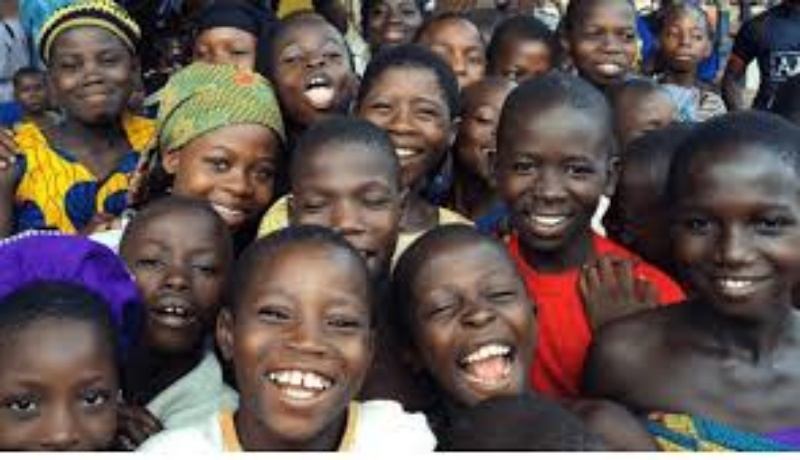- NESG report states that 20 million Nigerian children live in multidimensional poverty
- NBS corroborates the report, says inflation rate has hit 26.72%
- Literacy implications of the NESG report
Recently, the National Bureau of Statistics, NBS, The National Economic Summit Group, NESG, issued a statement, saying that out of the 130 million Nigerians wallowing in multidimensional poverty, 80million are children.
NESG’s Chief Executive Officer designate, Dr. Tayo Aduloju, stated this on the sideline of the just concluded 29th edition of the Nigerian Economic Summit, NES#29, in Abuja.
However, according to Dr. Aduloju “Some children are left in Multidimensional poverty and over 20million out of school. If we continue to leave that population in that situation, it means we are leaving children well being and have left them unprepared for the future.”
Explaining further, NESG stated that “we need to see the Federal Government take ownership of this by coordinating the sub-national governments so as to be on the same page in tackling the problem nationwide.”
The Founder of Isa Wali Empowerment Initiative, Mrs. Maryam Uwais, said what we need to address the high rate of poverty and out of school children menace is to escalate awareness at grassroots level.

“Many of them do not understand why people live in poverty. We need to give incentives to attract children to school and make them change their mindsets.
“Lots of work needs to be done in terms of advocacy. Also, the policy makers need to come up with policies that would address these menace.”
Speaking on the issue of poverty in Nigeria Senior Program Officer at Bill Gate & Melinda Foundation, Dr. Shima Aladeshawe, pointed out that Nigeria is abysmally behind the 2030 target.
“We need to get our target right. Government must rethink incentivising the sub-nationals to key into the agenda.
“Government of the day must galvanise every one and come up with strategies to solve the problem now.”
What is multidimensional poverty all about?
According to the Oxford Poverty and Human Development Initiative, multidimensional poverty includes deprivations experienced by poor people.
These deprivations include a situation such as poor health, lack of education, inadequate living standards, and living in environmentally hazardous areas, among others.
In any case, the situation of Nigerian child is not farfetched from the above deprivations especially as Nigerian living standard continues to take an unprecedented nose dive.
Putting it in a common understanding of the term, these 80 million of Nigerian children are poor because they lack access to health and education and suffer poor living standards, coupled with unemployment and other economic shocks.
Finally it simply means that if you cannot afford more than one of the essential survival needs as stated above such as good health, basic education, good living standards and gainful employment, it means you are multidimensionally poor.
How affordable is healthcare to Nigerian child?
The National Health Insurance Scheme (NHIS), said recently that the scheme presently covers less than 10 per cent of Nigerians – most of whom are Federal employees and their dependents, even after almost 20 years of its operation in Nigeria.
However, another report had it that only 3% of Nigerians have health insurance the rest of the country’s teeming population, unable to afford insurance premiums, pay out-of-pocket for expensive healthcare services.
This Out-of-pocket payments can make households and individuals incur catastrophic health expenses, with evidence that such costs can exacerbate the poverty level of such individuals or households.
Further findings showed that in the formal sector, less than 5% of Nigerians are covered by the NHIS, and only 3% of people in the informal sector are covered by voluntary private health insurance. Uninsured patients are at the mercy of a non-performing health system.
However, examining one of the most common illnesses Nigerians have, Malaria. A popular joke among Nigerians is that “everybody in Nigeria has at least 1malaria”. Uncomplicated malaria treatment costs an average of US $1.96 per episode, and the line of poverty is set at $1.90 per person per day. This means that 1 round of Malaria treatment costs more than Nigeria’s estimated 95.1 million poor have in a day.
Coartem, Armatem, Lonart and other popular brands cost between N1200 and N2500, that’s far higher than the $1.90 poverty line, which at official rates is just about N842.19.
Affordability of Education to the Nigerian child
The United Nations Educational, Scientific and Cultural Organisation (UNESCO) cites that the total of out-of-school children (OSC) in the nation is more than 20 million.
According to UNESCO, the data is based on those aged six to 18 years, ranging from primary one to senior secondary school three.
The report also showed that Nigeria has one of the highest number of out-of-school children in the world.
The 2022 UNESCO report noted that approximately 20 million Nigerian individuals of its approximately 200 million population are not enrolled in school.
This amounts to 20 percent of Nigeria’s entire population and is more than the overall population of various countries in Africa.
The report further said there are 244 million children and youth between the ages of six and 18 worldwide who are still out of school and “the region with the second highest out-of-school population is Central and Southern Asia with 85 million.”
The top three countries with the most children and youth excluded from education are: India, Nigeria and Pakistan.
This phenomenon is not unconnected with the increasing high cost of education in the country when juxtaposed with the poverty level of millions of Nigerian parents.
Can our parents afford to give their children three square meals a day?
Findings by some experts have it that most Nigerians have given up on the idea of three square meals.
For some, it’s fit fam, but for most people, especially the 95.1 million poor, it’s simply not sustainable and unaffordable.
In any case, for a country where most household goods have dollar inputs, either in the form of energy (imported diesel/petrol) or raw material, the monthly minimum wage of N30,000 is insufficient to sustain feeding alone.
According to a report by Picodi, an international e-commerce firm, Nigeria ranks worst among 64 countries where minimum wage can ensure a minimum standard of living.
With the rising prices of commodities, especially food, make rapid climbs amid stagnant or dwindling income, more and more people are “fasting” out of hunger.
Latest food inflation figures are at a dizzying height of 26.72%; the naira’s worrying weakness against the dollar, insecurity in the farm settlements across the Federation, high cost of chemicals and petroleum products, there is certainly no end in sight on this ugly trend.
Common food commodities like rice, beans, garri have all risen astronomically since last year, and even the alternative food options that people resort to when other food items are out of reach are now out of reach as well.
When considering the subject of multidimensional poverty, beyond the buzz, consider that what it means in practical terms is the choice between expensive food and good nutrition and all that goes into having that, high healthcare costs, and factors like maternal and child mortality, high incidence of malaria deaths etc., education and the implications for literacy as well as in all the other indicators that make up the fifteen used in determining Nigeria’s current figures.
Nigeria’s 133 million people living in Multidimensional Poverty means 6 in 10 people have to constantly do an opportunity cost at varying scales that is far removed from the reality of the rest of the population, not in this bracket.
Implications of the NESG report on Nigerian children
The NESG report is coming few days after the National Bureau of Statistics, NBS also issued a statement, explaining that the Nigerian inflation rate has hit unprecedented 26.72 percent in September 2023 — up from 25.80 percent in the previous month.
The inflation rate in Nigeria is further fueled by the abrupt removal of fuel subsidy by Tinubu administration.
Fuel price has long become a connecting point in Nigerian economy. The removal of the subsidy exposed two hundred million Nigerians to skyrocketing fuel price and its concomitant economic effects.
From N185/litre to N670 per litre, Nigerians have not had it so bad like the post-subsidy era.
In any case, as Nigerian children are being subjected to such poverty level, the implications are too numerous to mention.
High security risk is prevalent in this situation. With over 20 million Nigerian children in such condition and equally out of school, needless to say that such situation poses high risk as many of them will eventually resort to criminality to survive.
Again, apart from security threats posed by this ugly trend, our health sector will be overwhelmed should there be any outbreak of disease in this regard.
Coupled with this also is the fact that Nigeria is riddled with poverty-stricken population and so, they say a poor usually lacks the mental ability to think properly or make good input in the society.
